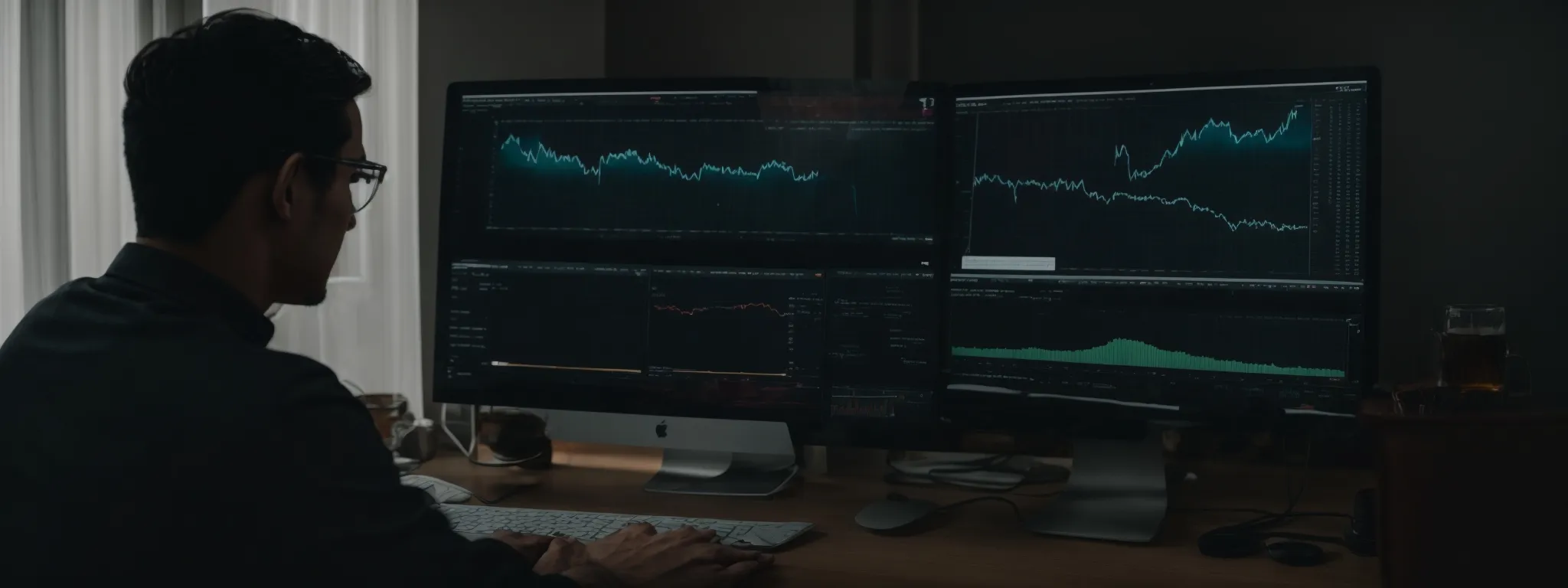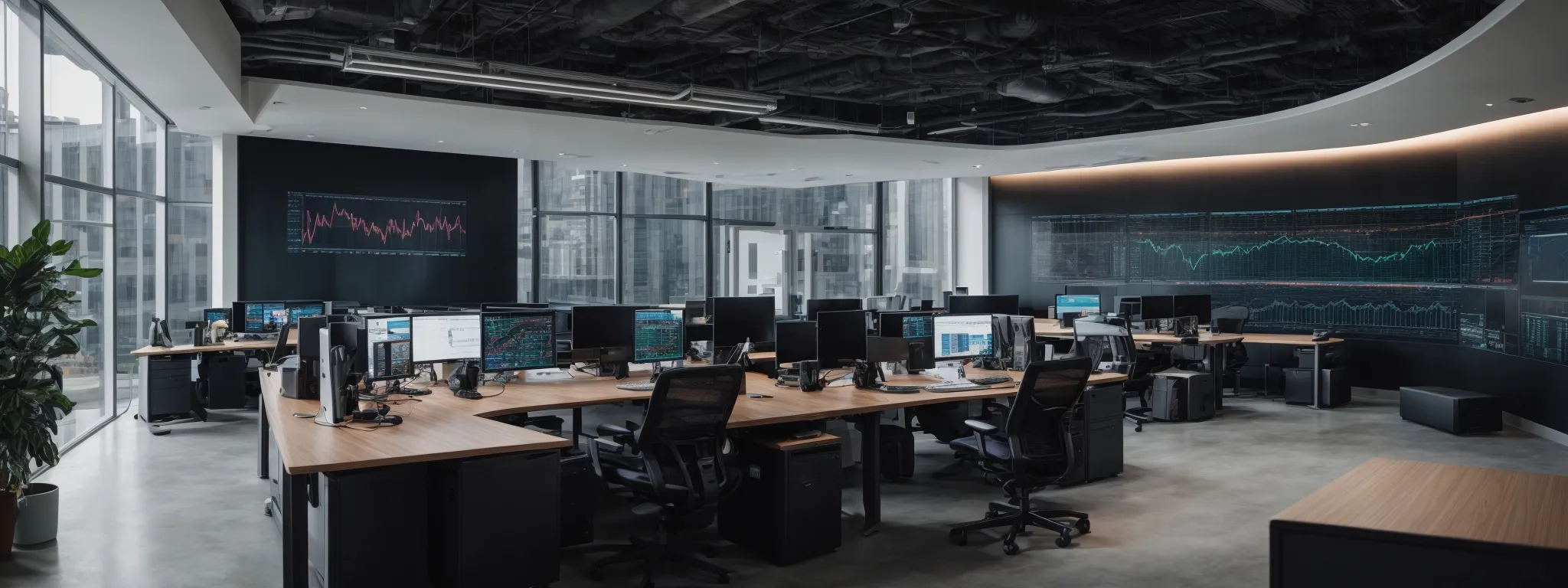What is SEO Content?— Explained
Understanding SEO Content: The Essential Guide In the digital age, mastering the art of SEO content is not just a desirable skill but a necessity for those […]
Understanding SEO Content: The Essential Guide
In the digital age, mastering the art of SEO content is not just a desirable skill but a necessity for those looking to claim the top spots in search engine result pages.
SEO content—is the fuel that drives visibility in Google search results, combining the science of keyword strategy with the art of reader engagement.
This guide will equip content writers, marketers, and search engine optimizers with the insights needed to craft compelling web content that not only resonates with the target audience but also satisfies the algorithms that stand as gatekeepers to search traffic.
For a deep dive into the world of SEO content and how LinkGraph’s expert services and Search Atlas SEO tool can amplify your site’s potential, keep reading.
Key Takeaways
- SEO Content Must Strategically Integrate Target Keywords and Align With User Search Intent
- LinkGraph’s SEO Services Optimize Content Visibility Using the Advanced Search Atlas SEO Tool
- The Quality and Optimization of Meta Tags and Descriptions Significantly Impact a Web Page’s Click-Through Rates and Search Ranking
- Regular Content Audits and Updates Are Essential for Maintaining and Improving a Site’s SEO Performance
- In-Depth Analytics and the Interpretation of KPIs Are Critical for Refining and Advancing SEO Content Strategies
What Is SEO Content?—Explained

In the realm of digital marketing, the term ‘SEO content’ emerges as a pivotal concept that distinguishes itself from regular content by its strategic orientation towards enhancing visibility and relevance in search engine results.
This type of content is crafted by skilled SEO content writers who meticulously integrate target keywords, ensuring that each web page resonates with both search engines and the user’s search intent.
Fusing the principles of search engine optimization with the art of content creation, SEO content is not merely about the inclusion of words that echo through Google search results.
It’s an intricate tapestry woven from keyword research, user engagement, and the pursuit of topping the search engine result pages (SERPs) – a core job description of search engine optimizers.
To truly appreciate its value, it is essential to unpack the definition of SEO content, delve into the role it plays in digital content creation, and discern how it transcends the scope of standard web content.
Unpacking the Definition of SEO Content
At its core, SEO content encompasses any material created with the objective of attracting search engine traffic. It’s not a matter of mere keyword stuffing; Professional SEO Content Writers embed target keywords seamlessly within valuable content focused on addressing the queries and needs of the reader.
LinkGraph’s SEO Services recognize the potency of this top-flight content, utilizing Search Atlas, a sophisticated SEO tool, to bolster web pages. This approach elevates the content’s position in SERPs, forging a path for higher visibility and drawing a more substantial volume of organic traffic to one’s site.
The Role of SEO in Digital Content Creation
The ingenuity behind SEO Content Creation lies in its harmonization of expressive writing with strategic positioning. Crafted by adept content writers, each web page must serve a dual-purpose; engaging the reader with relevant and compelling information while simultaneously adhering to the algorithms that propel content up the search engine results ladder.
LinkGraph has mastered this delicate balance through its SEO services, deploying the robust capabilities of its Search Atlas SEO tool. These resources empower creators to construct content that not only answers the searcher’s needs but also aligns with the search engine’s criteria for quality and relevance – a critical element of successful search engine marketing and organic visibility.
How SEO Content Differs From Regular Content
SEO content stands apart from its regular counterpart by maintaining a laser-focus on search engine algorithms, ensuring content is optimized for both visibility and user experience. It involves precise application of SEO strategies, from the Meticulous Use of Target Keywords to the crafting of meta descriptions that elevate a site’s relevance within Google search results.
Distinct from traditional content, which may prioritize narrative flare or subject depth, SEO content aligns more closely with user intent and search queries. LinkGraph’s SEO services adeptly navigate these waters, ensuring every product page, landing page, and blog post is calibrated to meet the expectations of search engines and the needs of users – ultimately leading to enhanced search result positioning and increased search traffic.
Key Components of Effective SEO Content

Navigating the delicate interplay between reader engagement and search engine recognition, effective SEO content hinges on the synergistic integration of several elements.
An expert SEO content writer envisions the web page as a balanced ecosystem where judiciously utilized keywords amplify visibility without compromising the narrative’s integrity.
Moreover, the astuteness applied to the sculpting of meta tags and descriptions cannot be overstated—these components act as beacons guiding searchers and crawlers alike toward a site’s relevant content, enhancing overall user experience.
It is within this confluence of quality and calibration that the triumphant SEO strategy emerges, leading the march towards digital prominence.
Utilizing Keywords to Boost Visibility
At the nexus of SEO content strategy, the purposeful utilization of keywords serves as the linchpin for boosting a web page’s visibility. Proponents of search engine marketing acknowledge the sway of a well-researched keyword strategy, where keywords act as lighthouses, shining through the dense fog of content populating the digital landscape.
The strategic placement of keywords within the title tag, subheadings, and throughout the content itself transcends mere frequency; it encompasses relevance and coherence with the audience’s search intent:
- Analyzing searcher behavior to determine the most effective primary keyword and related terms.
- Implementing keyword research tools to refine the selection and usage of keywords that capture the searcher’s query.
- Optimizing the web content around these keywords while maintaining natural readability and flow.
LinkGraph’s SEO services leverage these techniques using Search Atlas, a comprehensive keyword tool, to ensure that their client’s content strikes the perfect chord with both visitor and search engine, thereby amplifying their digital presence and search traffic.
Balancing Quality Content With SEO Practices
In the intersection of SEO and content creation, experts at LinkGraph know that the substance of web content must never be overshadowed by optimization techniques. Their commitment to this balance ensures that each piece of content not only caters to the algorithms but also provides genuine value, strengthening the connection between the brand and its audience.
LinkGraph’s adept SEO services weave search engine marketing practices into the fabric of high-quality content without disrupting its natural appeal to the reader. This method guarantees that the reader’s experience and the site’s performance in search rankings progress hand in hand, converging toward the pinnacle of digital marketing efficacy.
Importance of Meta Tags and Descriptions
The essence of meta tags and descriptions lies in their role as succinct but powerful summaries that inform search engines and users alike about a web page’s content. These HTML elements are critical, as they contribute significantly to a user’s decision to click through from the SERP to the website, thereby impacting both click-through rates and overall website traffic.
Concurrently, meta tags and descriptions serve as an opportunity for SEO content writers at LinkGraph to encapsulate the core message of their client’s web page. Effectively optimizing these tags with target keywords fosters improved search engine discoverability, aligning the user’s search intent with the content presented on the page.
| SEO Component | Purpose | Impact on SEO |
|---|---|---|
| Meta Titles | Summarize page content in a concise headline | Directly influences SERP click-through rates |
| Meta Descriptions | Provide a brief overview of page contents | Encourages engagement by matching user intent |
| Target Keywords | Reflect user search terms and queries | Enhances visibility and search engine ranking |
Crafting SEO Content That Ranks

Embarking on the journey to produce SEO content that propels a website to the upper echelons of search engine results necessitates a nuanced understanding of various critical facets.
This quest begins with identifying topics ripe with SEO potential, a step where one deciphers the complexities that govern search relevancy.
Delving deeper, the evolution continues with advanced writing techniques designed specifically to elevate a site’s search ranking.
These methods are infused directly into a writer’s style, allowing them to seamlessly blend SEO-rich elements with engaging and informative prose that appeals to both search engines and discerning readers.
The following discussion unfolds the subtleties involved in these areas, each instrumental in constructing content that competently bridges the gap between visibility and value.
Researching Topics With SEO Potential
Pinpointing topics brimming with SEO potential is a strategic endeavor that LinkGraph’s SEO services excel at. Their experts deploy the Search Atlas Tool, which uncovers topics that not only resonate with an audience’s current interests but also possess untapped potential in search rankings, setting the stage for content that is both engaging and discoverable.
Each content writer at LinkGraph operates at the junction of industry trends and keyword insights, analyzing data to forecast which subjects will serve as beacons to guide search traffic to a client’s website. By identifying and acting upon these insights, LinkGraph ensures that every piece of content is a step ahead, anticipating user needs and search engine trends to secure a competitive edge.
Writing Techniques to Improve Search Ranking
Mastering the Art of SEO Content creation demands more than just a flair for language; it requires a tactical approach to writing that marries reader interest with search engine criteria. Methodical SEO content writers at LinkGraph deploy distinctive writing techniques that prioritize the cohesiveness and relevance of content around strategic keyword placement, ensuring that each sentence is engineered not only to engage but also to enhance the content’s discoverability in search engine results.
Within the framework of search engine marketing, LinkGraph’s seasoned team harnesses the power of persuasive, concise, and informative web content. Elevating their approach, they purposefully structure articles with thoughtful keyword densities, anchored by powerful title tags and compelling meta descriptions, which work in concert to maximize the footprint of web pages across search result landscapes, driving both visibility and user-centric value.
Incorporating SEO Into Your Writing Style
Incorporating SEO into one’s writing style transcends mere keyword insertion, evolving into a strategic symphony of content creation where every phrase caters to both user and search engine. LinkGraph’s seasoned SEO content writers exemplify this command of language, ensuring that each web page not only serves the user’s quest for information but also speaks to the algorithms that underlie the architecture of search.
Embracing this strategic fusion into a coherent writing style underscores the importance of a nuanced balance. Optimized content radiates through search engine results when the prose flows naturally, engaging the reader with clarity and ease while subtly fulfilling the Technical Requirements of Search Engine Algorithms:
| Content Aspect | SEO Functionality | Contribution to Writing Style |
|---|---|---|
| Natural Keyword Integration | Improves content relevance for search queries | Encourages a seamless blend of informative and searchable content |
| Engaging and Relevant Prose | Reduces bounce rates and enhances time on page | Promotes captivating storytelling aligned with user intent |
| Strategic Meta Element Usage | Aids in the ranking of web pages in SERPs | Shapes succinct, powerful introductions, enhancing the reader’s journey |
SEO Content Formats You Need to Know

In the digital tapestry where content reigns supreme, discerning between the various formats that align with SEO best practices is paramount.
This essential guide serves to illuminate the distinct yet interconnected pathways through which SEO-friendly content can be crafted.
Readers will learn to distinguish the nuanced differences between blog posts and articles, each contributing uniquely to a site’s search engine standing, and explore the dynamic role of multimedia as a potent catalyst for enhancing SEO efforts.
Join us as we traverse the landscape of content formats, where the written word and visual media converge to elevate a website’s relevance and reach.
Identifying Various Types of SEO-Friendly Content
In the dynamic landscape of digital marketing, SEO-friendly content takes many shapes, each engineered to enhance the site’s visibility and usability. From in-depth guides that assert a company’s expertise to concise product pages designed for quick user decisions, different content formats serve varied purposes while uniformly aiming to secure top rankings on SERP.
LinkGraph’s SEO services strategically exploit the diversity of content formats, leveraging blog posts that engage and inform targets audience, to informative articles that establish domain authority. These content variations are meticulously optimized to resonate with search engines and fulfill user intent, ensuring that each piece contributes positively to the site’s overall search engine performance.
Blog Posts vs. Articles: Understanding the Difference
The discourse surrounding blog posts versus articles often centres on the purpose and tone the content is intended to express. Blog posts, traditionally more informal, shine as vehicles for direct conversation with a target audience, often punctuated by a personal voice and a contemporary feel that fosters reader engagement and interaction.
Articles, by contrast, are distinguished by a more formal and structured approach, aimed at delivering comprehensive, factual information typically supported by in-depth research. They are the stalwarts of content that leverage an authoritative tone to inform, educate, or present analysis, contributing to the site’s credibility and depth within a given industry.
Leveraging Multimedia for Enhanced SEO
LinkGraph’s comprehensive approach to SEO encompasses the Strategic Use of Multimedia elements to enhance search engine visibility. By incorporating images, videos, and infographics into content, the company ensures a richer user experience and improves the chances of a web page to appear in image and video search results:
- Integrating visual aids that complement text and clarify content can significantly boost user engagement and dwell time on a page.
- Embedding relevant videos provides demonstrable information that can increase understanding and persuade visitors to spend more time interacting with the site.
- Adopting infographics and other visual formats facilitates easier consumption of complex data, thereby catering to user preference for digestible information.
Moreover, LinkGraph tailors each element of multimedia to optimize for targeted keywords, ensuring consistency across all content formats provided to users. This meticulous attention to SEO detail not only enriches the content’s quality but also supports the technical backbone of site optimization for improved search rankings.
Optimizing Your Existing Content for SEO

In a digital landscape ever-evolving and relentlessly competitive, optimizing existing website content blossoms into a strategic necessity.
Businesses and marketers are called to continually refine their digital assets to stay ahead in the game of search engine rankings.
In the subsection that follows, the focus shifts towards leveraging current assets as untapped reserves of potential—auditing website content to unearth SEO opportunities, revitalizing legacy posts to spur newfound relevancy, and diligently tracking content performance to inform dynamic adjustments.
Each represents a cornerstone practice in the perpetual quest to optimize every slice of content to meet the rigorous demands of modern search engines and the sophisticated needs of users.
Auditing Your Content for SEO Opportunities
Auditing a website’s existing content emerges as a vital component of an overarching SEO strategy. LinkGraph’s SEO services meticulously scrutinize pages to unearth latent opportunities for ranking improvements, aligning with evolving algorithms and enhancing user relevance.
Evaluating web content with a comprehensive analytical approach serves to highlight areas ripe for optimization:
- Assessing the efficacy of current keyword integration and exploring avenues for better alignment with user queries
- Examining backlink profiles to strengthen the site’s authority and relevance in search results
- Gauging the depth and quality of content to boost topic authority and user engagement
Through a keen content audit, LinkGraph elevates each aspect of a client’s website, enhancing its performance across search result pages, driving relevant search traffic, and solidifying a competitive edge in a crowded digital space.
Revitalizing Old Posts to Improve SEO
In the continuous pursuit of search engine supremacy, LinkGraph’s SEO services spotlight the transformation of older content as a cornerstone for SEO gains. Refreshing outdated posts not only breathes new life into previously published material but also serves as a strategic maneuver to bolster a site’s relevancy and authority in fast-changing search landscapes.
Revitalization involves more than mere content updates; it demands a reassessment of user intent, recalibration of target keywords, and careful enhancement of narrative structure. This practice ensures that past contributions continue to support a robust SEO framework, resonating with current trends and satisfying the ever-evolving algorithms that dictate prominence in search results.
Tracking Content Performance and Making Adjustments
LinkGraph’s SEO services underscore the importance of monitoring how content performs in real-time, guiding strategic adjustments that align with user behavior and search engine updates. This encompasses analyzing metrics like page views, bounce rates, and time spent on the page: indicators of engagement and the value users derive from the content. By responding to these insights, the company refines SEO tactics, harnessing a data-driven approach to maintain and improve search rankings.
| Metric | Purpose of Monitoring | Role in Content Adjustment |
|---|---|---|
| Page Views | Gauge popular content and user interest | Identify topics that attract audiences for focused optimization |
| Bounce Rate | Assess user engagement and content efficacy | Highlight the need for enhanced relevance and user retention tactics |
| Time on Page | Measure depth of user interaction with content | Inspire improvements to content depth and quality to increase engagement |
The pursuit of SEO excellence via content performance tracking demands the aptitude to evolve with the shifting digital tide. LinkGraph’s proficiency lies in transforming raw analytical data into actionable insights; adjustments to content are meticulously tailored to bolster organic search visibility, improve reader satisfaction, and drive meaningful engagement across the client’s digital portfolio.
Measuring the Success of Your SEO Content

In the ever-evolving landscape of digital content strategy, gauging the effectiveness of SEO efforts stands at the forefront of securing a prominent online presence.
This crucial phase in the lifecycle of content marketing hinges on meticulously identified Key Performance Indicators (KPIs), advanced analysis tools, and a deep understanding of analytics that together shape and refine the overarching SEO strategy.
Market leaders and content creators alike leverage these insights to iterate and enhance the impact of their content, strengthening their foothold in the competitive terrain of search engine rankings.
The ensuing discussion delves into the meticulous process of measuring success, equipping stakeholders with the knowledge to navigate the intricate nuances of SEO content analysis.
Key Performance Indicators for SEO Content
Success in SEO content can be closely tied to well-chosen Key Performance Indicators (KPIs), which serve as quantifiable metrics reflecting the performance of content in relation to SEO objectives. Recognized KPIs include organic traffic, keyword rankings, and conversion rates, providing concrete data that gauge the effectiveness of content in achieving a strong search engine presence and valuable user interactions.
Monitoring these indicators allows LinkGraph’s SEO experts to discern the resonance of SEO efforts with the target audience, as well as to detect the efficacy of specific content in driving desired actions. Such insights become the compass guiding the ongoing optimization of SEO content strategy, ensuring each piece of content contributes to the overarching goals of traffic generation, engagement, and conversion.
Tools and Tactics for SEO Content Analysis
LinkGraph’s proficiency in SEO extends to the judicious application of analytics tools and tactics for in-depth content analysis. They skillfully employ industry-leading platforms that track keyword performance and user interaction to glean actionable insights into content efficacy.
Their experts adeptly harness these tools to evaluate the nuances of SEO execution, identifying opportunities for refinement and tailoring strategies to the distinct landscape of search engine algorithms. This data-driven approach is pivotal in optimizing content to meet the stringent demands of digital marketing excellence.
Interpreting Analytics to Refine Your Strategy
Interpreting analytics transcends data collection, entering into the sphere of strategic interpretation that fuels refinement of SEO content strategy. LinkGraph’s experts analyze performance metrics to discern patterns and trends, tailoring their approach to magnify strengths and address weaknesses, ensuring their clients’ content is calibrated precisely for optimal search engine performance and user satisfaction.
Performance metrics, while indicative of past content behavior, also offer prognostic insights that guide future content development. By critically analyzing user behavior, LinkGraph constructs a forward-looking SEO strategy that anticipates the ever-evolving needs of a target audience, refining content to align seamlessly with user intent and search engine advancements.
Conclusion
Understanding SEO Content: The Essential Guide” is an indispensable resource for mastering the intricacies of SEO content creation and optimization.
The guide emphasizes the strategic integration of target keywords, user engagement, and adherence to search engine algorithms for digital content to stand out in the competitive arena of search engine results pages (SERPs).
It underscores the distinction between various SEO components, such as meta titles, descriptions, and the use of keywords—all crucial for enhancing visibility and ranking.
Moreover, the guide delves into the art of crafting content that resonates with both users and search engines, incorporating SEO seamlessly into writing styles and leveraging multimedia to enrich user experience.
It also stresses the ongoing practices of auditing existing content, revitalizing old posts, and tracking content performance for sustained SEO success.
Ultimately, the guide equips readers with the knowledge to carefully measure content success through Key Performance Indicators and analytics tools, ensuring a refined and data-driven SEO strategy.
This comprehensive understanding of SEO content is vital for anyone aiming to significantly improve online presence and drive meaningful engagement in the digital space.












































































